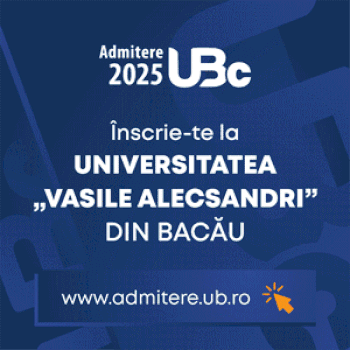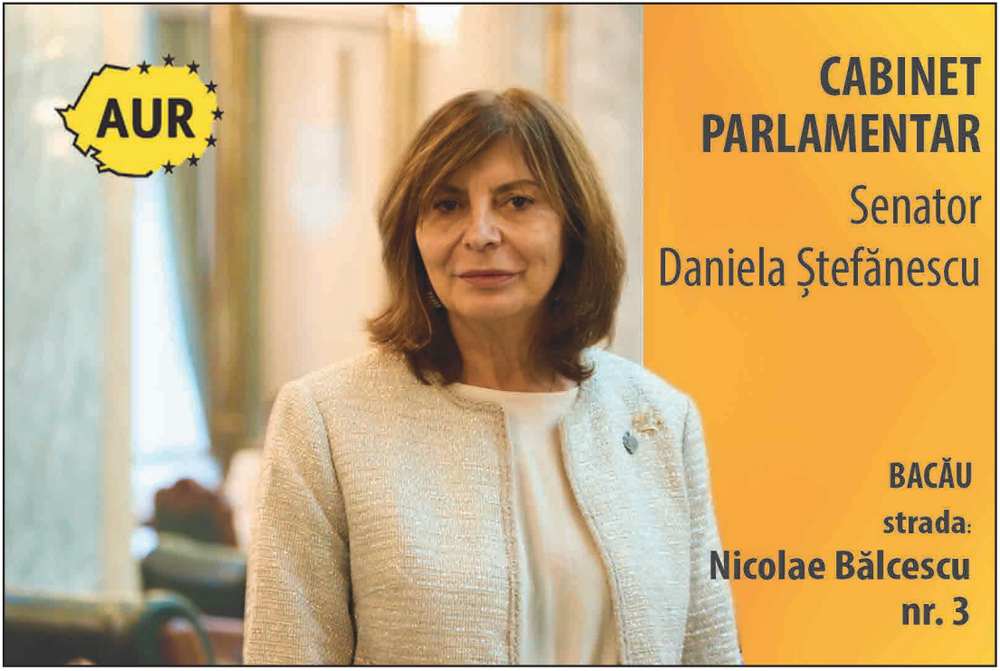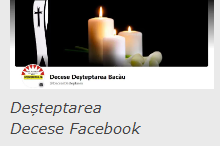Travelers wanting to know the authentic values of Romanian popular culture should, if we are to paraphrase historian Nicolae Iorga, „visit the countryside, village by village, crossing the thresholds of the old churches”, and if time is short they should visit „village museums, temples of the nation”.
Bacau’s such cultural institutions, raised by people with an admirable sense of these places’ history, fulfill three major roles: keeping the material values as symbols of the creative spirituality of the three ethnographic areas characteristic to the county — Trotus, Bacau and the Tutova Hills, offering access to the local traditions and allowing dissemination of knowledge regarding them.
Traditional peasant homes in the county combine elements of Moldovan architecture with a pragmatic view. The white houses, decorated with carved or fretted wood, ennobling the eaves, verandah or porch, are the main pillars in a homestead decorum in which, together with the house, we can find the trellis, the barn, the cellar, the outdoor oven, the well and the coop and hogsty. The flower garden in front of the house, the vegetable garden out back, the vineyard and the orchard are a permanent source of homestead upkeep as well as a constant reason for toil. On holidays or Sundays, the villagers dress in the traditional attire they inherited from their parents, in traditional silk „ie” (most common type of Romanian-style blouse) woven at home, in suits fashioned and embellished by hand, wearing leather opinci (a traditional type of footwear) made by their own hand. The craftsmanship of the villagers has bested even the hardest materials, allowing craftsmen to fashion them into objects necessary in the homestead.
The 491 villages in Bacau County, covering a total surface of 6,621 square kilometers, 2.8 percent of the country’s territory, keep alive, through these kinds of local museums, the olden ways of life, the moral, cultural or spiritual values of the Romanian village, which are „Important reference points, with an emblematic value for the county”, says Iulian Bucur, a researcher in the Museum Complex of Bacau.
„Metaphorically speaking we can say that such a museum is a history of the life of a community, whose pages are the exhibits and their evolution based on the identity of the dwellers and their distinctive signs. They are the thesaurus of that community, fact that highlights not only the idea of inheritance, of transmitting cultural values from generation to generation, of creating a palpable tie between past and present, but also the duty of today’s generations to carry this thesaurus into the future”, says, in her turn, Feodosia Rotaru, a Bacau researcher specializing in folklore and ethnography.
The type of village museums in Bacau County, built mostly on the initiative of teachers, professors and priests, the main mentors of the rural communities, differs greatly, ranging from institutions with multiple sections to institutions focusing on a single domain, to memorial houses, churches or even an entire village, as is the case of Berzunti, renowned for the highly-adorned homestead gates or Casin, well-known for the wooden ornaments that adorn the houses.
The „Casa Zamfirei” village museum of Sanduleni, a village situated 30 kilometers from the city of Bacau on the road to Onesti, was founded by priest Daniel Puiu. It is situated in a space that presents a miniature of village life through the traditional house last owned by Zamfira, the museum’s namesake. The grounds, with all the chattels typical of a somewhat wealthy homestead, a well, and a small chapel, complete the naturally-beautiful location.
The homestead-museum, with its clay porch covered in reed and planks, with windows typical of traditional homes built in the 19th century, contains within a rich collection of household items, homemade carpets, towels, traditional pieces of attire, furniture, embroideries, but also masks. The courtyard and annexes host agricultural tools and harnesses, reminding of the daily activities of the village dwellers. The wooden chapel is home to a collection of icons done either on wood by dwellers in the area, or reproductions of icons found at the Nicula Monastery.
The Sulta village museum, in the eponymous village well-known for its rich tradition in traditional crafts, is hosted by a former school. Among the exhibits donated by the old villagers we may find traditional attire worn usually on holy days and at religious ceremonies, embroideries, homemade lace table cloths, embroidered towels, icons and prayer books dating back to the late 19th century, but also homestead items, such as tools for processing hemp, looms and earthenware. The initiator of this local patrimony of culture and civilization, teacher Maria Craciun, says that the museum „is a village history lesson that pupils learn, of the traditions and crafts of their elders that they must keep”.
The ethnographic museum of Poiana Sarata reunites material values of this Romanian martyr village (the village and its dwellers suffered greatly during the Hungarian occupation of northwestern Transylvania in the Second World War) on the Trotus river valley deeply scarred by the injustices of history.
Hosted in two halls in the school’s building, the museum is composed of exhibits representative for the life of the village dwellers, being grouped into sections. The first is the section dedicated to the collection of traditional clothing for women, men and children, as well as clothing specific to the trades of the village. The second section reunites tools specific to the trades of the village: sheep husbandry, woodworking and weaving.
„For us it’s tradition. Everything is well rooted and nobody wants to change the village habits. That’s why every villager has donated an item from his own homestead for the museum, to make known the historical past of the place to all who want to get to know us”, says zootechnical engineer Nicolae Vranceanu, the caretaker of this museum.
The „Priest Vasile Heisu” ethnographic museum is hosted in the headquarters of the Racaciuni Commune Hall, a patrimonial edifice, nearly 25 km away from the city of Bacau on National Road 2 that ties the city to the town of Adjud.
The museum’s patrimony is the fruit of the labor of priest Vasile Heisu (1911-1971) who for several decades collected over 700 pieces of traditional attire and interior textiles from the villages in southern Bacau on both banks of the Siret River: Racaciuni, Orbeni, Pancesti, Parava, Valea Seaca and Corbeasca. Exhibited in a hallway and six rooms, the exhibits lie in cabinets recessed in the walls. The hallways is host to two traditional carpet made using the „chilim” technique.
The items of clothing are grouped after their village of origin and period in which they were created. The women’s clothing are formed from „catrinte” (a type of traditional headscarf), long ie-type dresses, silk handkerchiefs and wool girdles. Another type of women’s attire is composed of an „androc” (a flannel or wool skirt), a linen or silk shirt, catrinta, and wool girdle. The men’s attire is simpler, being composed of traditional „itari” (a type of tight pants made of wool or hemp), a simple shirt, vest, and money belt.
„All the pieces exhibited talk about the craftsmanship and good taste of women and girls in the villages of the Siret Valley”, says curator Feodosia Rotaru.
A special sector of the museum is destined to presenting tools used in creating these items of clothing. The museum being Racaciuni, practically, the birth act of the ethnography section of the Iulian Antonescu Museum Complex of Bacau after the donation made in 1971 by priest Vasile Heisu.
Built over six decades, the museum complex of Prajesti that bears the name of professor Paul Taralunga, is composed of exhibition halls hosting nearly 3,000 items grouped in eight sections: geology, paleontology, archeology, ethnography, numismatics, botanics, zoology and crafts, also featuring a botanical garden that houses over 2,000 species of trees, shrubs, decorative and wild flowers.
Visitors can see in this „space of palpable culture and education”, as professor Taralunga would call it, situated 24 km away from Bacau City, mammoth fossils, teeth and bones, discovered in the old Siret riverbed, but also pottery fragments and other items of the Cucuteni culture, of the Neolithic and Bronze ages, as well as rare autochthonous mammals and birds, such as the greater spotted eagle and the stone curlew, stuffed by the students themselves, the most trusted helpers in the demarches of the skilled and enthusiastic Prajesti professor. Furthermore, the museum is host to traditional items carved from wood and bone, some two centuries old.
Biology passionates can see monstrous lamb, pig or dog embryos preserved in the museum’s laboratory. The jars show visitor how a two-headed lamb or pig looks like. Also kept in formalin are a baby dolphin and an adult seahorse. Another room is host to other autochthonous stuffed animals such as a bear, a fox and a European pine marten.
History buffs also have the occasion to see what a halberd, or other weapons used in Romania’s historical wars, look like, their origin being ascertained following their discovery in archeological expeditions in the county coordinated by specialists from the museum in Bacau.
The museum complex in Prajesti, founded in 1971 by professor Taralunga, the museum’s coordinator until 2012, when he passed away at the age of 91, has recently received from local authorities 400,000 lei for modernization and rehabilitation of some sectors.
Historian and curator Iulian Antonescu, speaking of the „unique institution” of Romania that is the museum complex in Prajesti, said that „its initiator was not only preoccupied with searching for museography treasures, but was also an excellent spreader of science, both from the teaching desk, as a professor, and among his fellow villagers”.
The „Zestrea stramosilor” (Heritage of our forefathers) village museum in the village of Trebes, situated 12 km east of Bacau City, was founded on the initiative of teacher Vasile Ababei, who also benefited from the support of well-known naive painter Ioan Maric, a local of the village.
The museum presents testimonies that attest the history, culture and social life of the dwellers there for which their village is „like an icon”, as the banner outside of the museum’s entrance reminds us. Household items, traditional clothing, carpets and testimonies from the village’s sons „all constitute a thesaurus that keeps and makes known the traditions, customs, social and cultural practice of the villagers of 100 years ago”, says mayor Marcelin Solot. The village museum in Trebes also contains an exhibit comprised of naive paintings done by Ion Maric, he who presents in a simplistic and anecdotic manner characters and occurrences of village life.
An exhibition space that incorporates an entire village is Berzunti, a village in Bacau County upon which, its dwellers say, „a blessing descended”. The houses, but especially their monumental gates, are recognized through their originality. Fulfilling, as fine arts professor Aurel Stanciu says, „both a practical aspect but also a cultural dimension”, the gates of Berzunti, marks of an entire village’s identity are tall, formed by three carved oak pillars topped by a shingled roof, a design unique to Romania. The motifs used by the village’s craftsmen are geometrical, floral or zoomorphic. The fame of the Berzunti gates has crossed the borders of the country, especially after 1990 when western visitors dawned in awe on these creations of popular art. Many of the craftsmen were requested to work in France, Germany, Italy, and Spain to embellish constructions of foreigners and many did not return to the village, continuing to create in other parts of the world, so that, at this moment, only two or three villagers keep the tradition alive.
Another creative aspect that has made Berzunti known is the manufacturing of traditional masks. The most renowned representative in this matter was Dumitru Vranceanu. Inspired by the faces of the villagers in creating the over one thousand masks he manufactured over his 80 years of life, he skillfully created them using leather, wool, beans, river rocks and wood.
Dumitru Vranceanu established his fame under the name of Mos Tache, in exhibits not only in Romania, but also in Europe, America or Australia. It was he who brought to foreigners the songs of Berzunti, roaming the world, delighting the public, together with an instrument he created, a sort of metal violin to which he attached a brass clarion.
Part of his creations can be found in a small collection gathered at the village school but most of his masks can be found in private collections around the world.
The village museums are „a blessing in supporting the traditions and originality of popular creation that attest the artistic perception of the beauty of landscapes, but also the inventiveness and diligence of people in Bacau’s villages” says ethnographer Feodosia Rotaru.AGERPRES

















